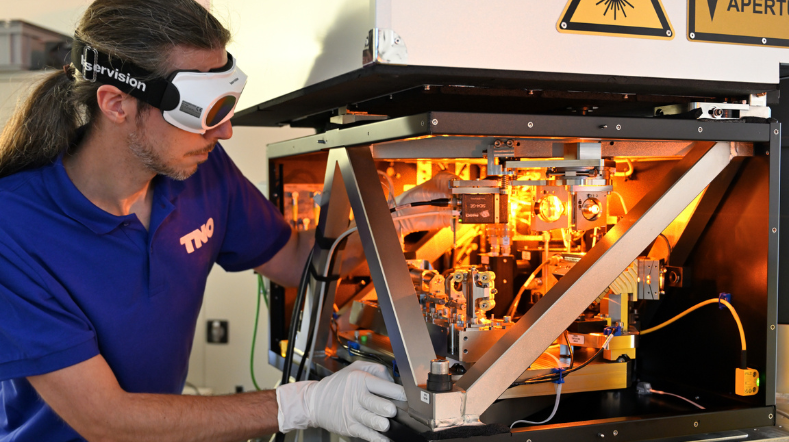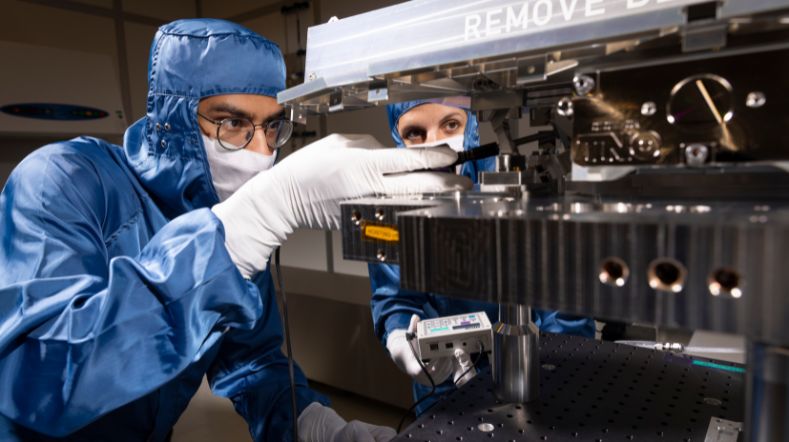
TROPOMI: measuring climate and air pollution
In cooperation with
Airbus Defence & Space Netherlands, SRON, KNMI
The satellite instrument TROPOMI is the most sophisticated and accurate instrument ever to carry out measurements from space for the purposes of climate and air pollution research. TROPOMI has been conceived and designed by experts in optics and mechanics at TNO and Dutch Space and has been built largely by the Dutch manufacturing industry. On 13 October 2017 this instrument, which is incorporated in the European satellite Sentinel-5Precursor, was launched by the European Space Agency (ESA) and has since been orbiting the Earth at an altitude of 824 kilometres collecting data. On 1 December 2017 the first measurements were received from TROPOMI. These measurements are more accurate than anything that has preceded them. The instrument sees air quality with more clarity than ever before, something that would not have been possible without TNO's knowledge.
Freeform optics
TROPOMI is a revolutionary technology that uses freeform optics to produce razor-sharp images and the most accurate information to date. TROPOMI has four detectors, together capable of detecting wavelengths in the infrared, visible and ultraviolet light spectrums. By comparing sunlight it has measured in space with light reflected back from Earth it is possible to calculate how certain concentrations of gases, such as ozone, nitrogen oxide and methane, develop in the atmosphere. The opto-mechanical heart of the instrument was developed by TNO: the Ultraviolet Visible Near-infrared optical bench module (UVN-OBM). This consists of the shared telescope and calibration unit and three of the four spectrometers that TROPOMI carries. This equipment is used to produce an image of the Earth every second, with a resolution of seven by seven kilometres.
Accurate climate research
Thanks to the precision of this instrument, air pollution is being mapped right down to city level, whereas its predecessor was working at the level of the Dutch provinces. In addition, it can distinguish between various sources of pollution, which means that measures can be taken. This information is important because it affords an insight into how clean the air is at the local level, which in turn enables government agencies to see whether environmental regulations are being followed.
TNO's expertise
‘We had to push boundaries to achieve very high resolutions and realise a broad dynamic range in a light, small and compact device,’ says Adriaan van 't Hof, TROPOMI project manager. ‘Our experts developed new technologies to do this, such as freeform optics so that mirrors and lenses could be produced in unprecedented forms. Another new technique was that of immersed grating, which involves applying minuscule grooves to glass in order that light can be split into various wavelengths. None of this had previously been shown to the world.'
Cooperation at global level
TROPOMI was designed for the Netherlands Space Office and ESA and built by Dutch Space in close cooperation with TNO as technological partner, and SRON and KNMI as scientific institutes. Dozens of specialist SMEs in the Netherlands and further afield were involved as suppliers of components and coatings.
Would you like more information about TROPOMI and freeform optics? If so, feel free to contact us.
Get inspired
Optics


Time setter story: Max van Strien


TNO technology selected for Secondary Mirror of W. M. Keck Observatory


Time setter story: Benjamin Brenny


Space systems engineering




